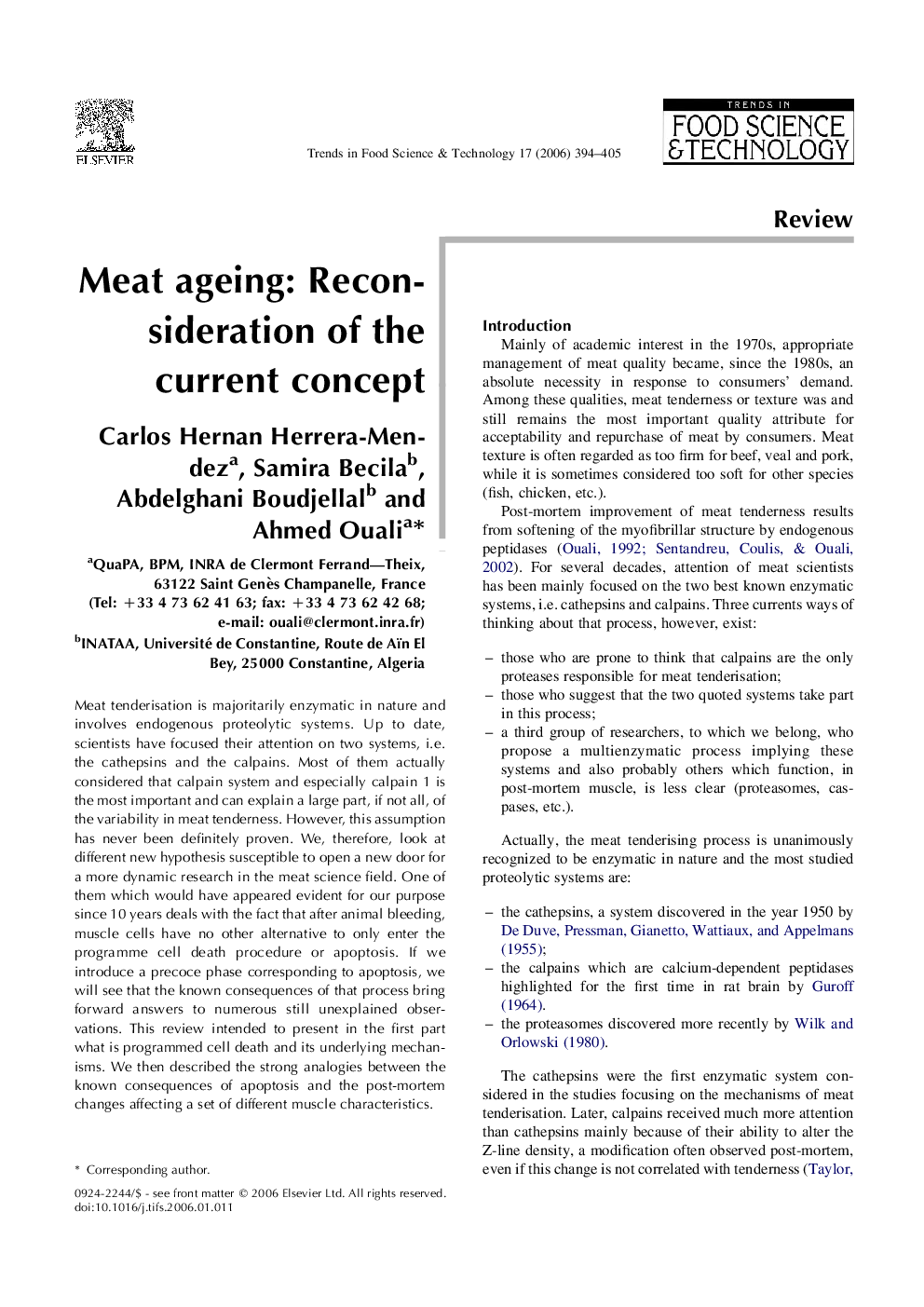| Article ID | Journal | Published Year | Pages | File Type |
|---|---|---|---|---|
| 2099619 | Trends in Food Science & Technology | 2006 | 12 Pages |
SummaryMeat tenderisation is majoritarily enzymatic in nature and involves endogenous proteolytic systems. Up to date, scientists have focused their attention on two systems, i.e. the cathepsins and the calpains. Most of them actually considered that calpain system and especially calpain 1 is the most important and can explain a large part, if not all, of the variability in meat tenderness. However, this assumption has never been definitely proven. We, therefore, look at different new hypothesis susceptible to open a new door for a more dynamic research in the meat science field. One of them which would have appeared evident for our purpose since 10 years deals with the fact that after animal bleeding, muscle cells have no other alternative to only enter the programme cell death procedure or apoptosis. If we introduce a precoce phase corresponding to apoptosis, we will see that the known consequences of that process bring forward answers to numerous still unexplained observations. This review intended to present in the first part what is programmed cell death and its underlying mechanisms. We then described the strong analogies between the known consequences of apoptosis and the post-mortem changes affecting a set of different muscle characteristics.
